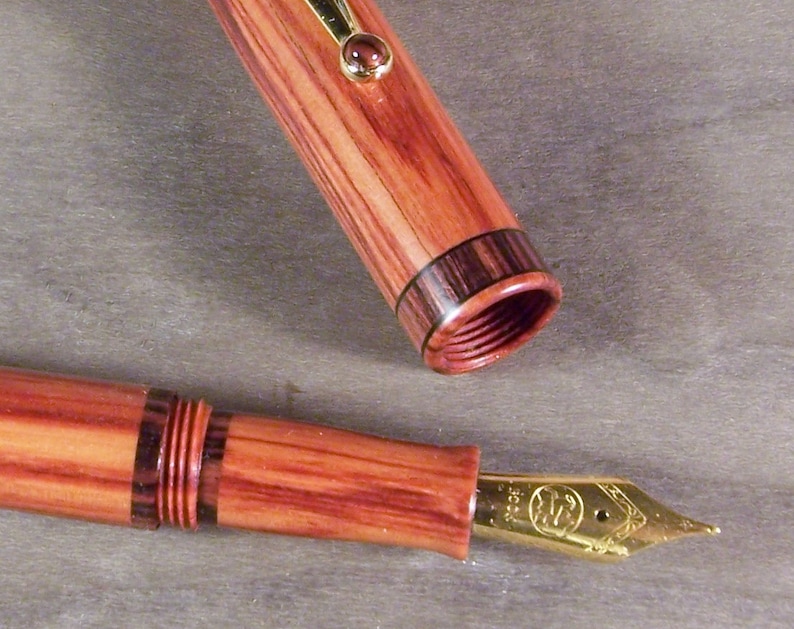How The Rise of Digital Writing Tools vs Traditional Fountain Pens: A Debate on Nostalgia vs Convenience can Save You Time, Stress, and Money.

The History and Evolution of Fountain Pens: Coming from Quills to Modern Masterpieces
The water fountain pen is a writing tool that has actually a long and exciting record. From its modest beginnings as a basic plumage, it has progressed in to a contemporary showpiece of engineering and style. In this short article, we will definitely explore the adventure of the water fountain marker, from its early origins to the present time.
The origins of the fountain marker can easily be mapped back to old times when people first started making use of pinions created from bird plumes to write. These plumages were plunged in ink and at that point made use of to write on parchment or newspaper. While efficient, this method was not without its downsides. The quills would often wear out promptly, needing constant replacement. Furthermore, since Learn More Here had to be continuously plunged in ink, there was actually always the threat of unpleasant spills.
In the 10th century, an innovative service was offered in Egypt - splint markers along with storage tanks built in to them. These pens were packed with ink by pressing their gun barrels or by attaching them to bottles including ink. While even more convenient than typical shafts, these splint pens still required constant refilling and were vulnerable to dripping.
It wasn't till the 17th century that significant progress in fountain pen modern technology happened. In 1636, Daniel Schwenter devised a unit gotten in touch with a "pump marker" that utilized a engine system to attract up ink coming from a bottle in to the pen's reservoir. This development marked an necessary step forward in making water fountain markers more functional and much less messy.
Over opportunity, different inventors helped make small improvements on Schwenter's design. In 1827, Petrache Poenaru patented what is looked at one of the earliest models of today's modern fountain pen. Poenaru's style featured an ink chamber along with a feeding device that made it possible for for a continuous flow of ink without the requirement for continual dipping or squeezing.
In 1884, Lewis Waterman even further changed water fountain pen innovation with the overview of the first practical fountain marker along with a capillary feed device. Waterman's design, which used a blend of capillary action and sky tension, gotten rid of the requirement for an external inkwell and made fountain pens extra reliable and handy to utilize.
Throughout the 20th century, fountain marker makers proceeded to fine-tune their designs and launch new component. In 1935, Parker Pen Company launched the Vacumatic filling unit, which used a vacuum cleaner to pull ink right into the marker. This advancement enabled for bigger ink abilities and minimized the regularity of filling up.
The invention of ballpoint pens in the mid-20th century positioned a considerable problem to water fountain pens' level of popularity. Ballpoints were a lot more hassle-free, didn't require regular refilling or servicing, and delivered smoother writing experiences. Nevertheless, fountain pen lovers stayed loyal to their beloved writing instruments due to their style, craftsmanship, and tailored writing experience.
In latest years, there has been a resurgence of passion in water fountain markers as collection agencies' things and deluxe writing musical instruments. Pen manufacturers have took advantage of this pattern by generating restricted edition markers with ornate designs and using priceless products such as gold or sterling silver.
In addition, modern water fountain markers now come furnished along with innovative attribute such as piston-fill devices that allow for very easy refilling without needing an external ink resource. Some markers also include modifiable points that may be readjusted to fit various writing designs or interchangeable nibs that enable users to switch over between fine or extensive collections.
Today's water fountain markers are not only practical but likewise works of fine art. They are valued for their visual appeal as a lot as they are marvelled at for their efficiency on paper. Debt collectors eagerly seek out vintage styles while also spending in brand new launch coming from well-known labels like Montblanc or Pelikan.
In final thought, the history and evolution of fountain pens is a testament to human resourcefulness and our ongoing quest for technology. Coming from quills dipped in ink to modern work of arts of style and design, the fountain marker has happen a lengthy way. Despite the intro of even more convenient writing musical instruments, the attraction of fountain markers endures. Whether for practical make use of or as items of charm, these pens carry on to spellbind writers and collection agencies alike.

